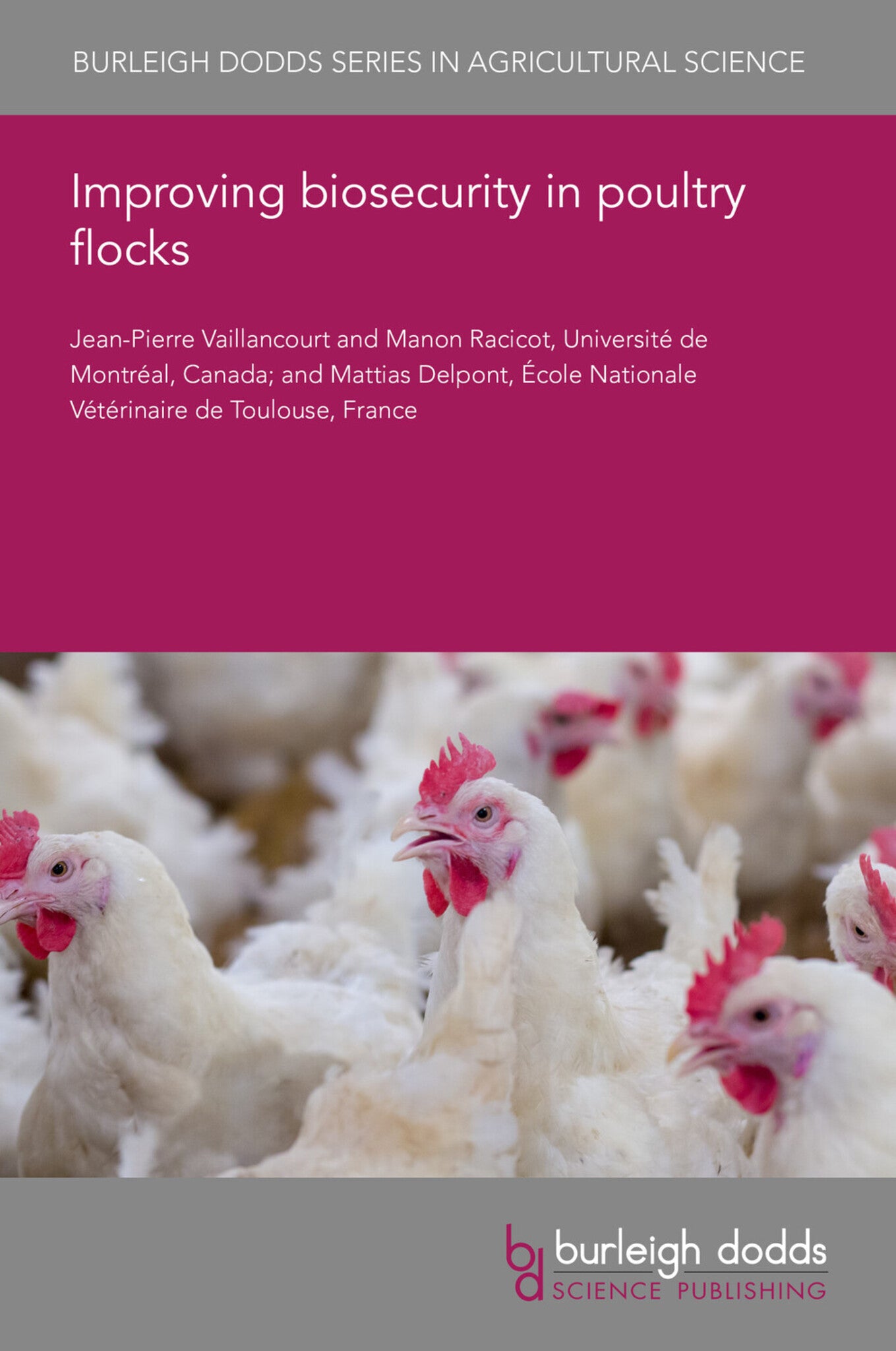We're sorry. An error has occurred
Please cancel or retry.
Improving biosecurity in poultry flocks

Some error occured while loading the Quick View. Please close the Quick View and try reloading the page.
Couldn't load pickup availability
- Format:
-
12 September 2022


TECHNOLOGY & ENGINEERING / Agriculture / Animal Husbandry, Poultry farming, TECHNOLOGY & ENGINEERING / Agriculture / Sustainable Agriculture, Sustainable agriculture, Agricultural science

1 Introduction 2 Reducing sources of contamination: cleaning and disinfection of poultry barns 3 Reducing sources of contamination: equipment and vehicles
4 Reducing sources of contamination: water and feed hygiene 5 Reducing sources of contamination: insect, mite and rodent pests, wild birds and pets 6 Reducing sources of contamination: manure, litter and dead birds 7 Separating healthy birds from sources of contamination: zoning production sites 8 Separating healthy birds from sources of contamination: hatchery 9 Separating healthy birds from sources of contamination: regional biosecurity 10 Biosecurity compliance 11 The economics of biosecurity 12 Conclusion and future trends 13 Where to look for further information 14 References



